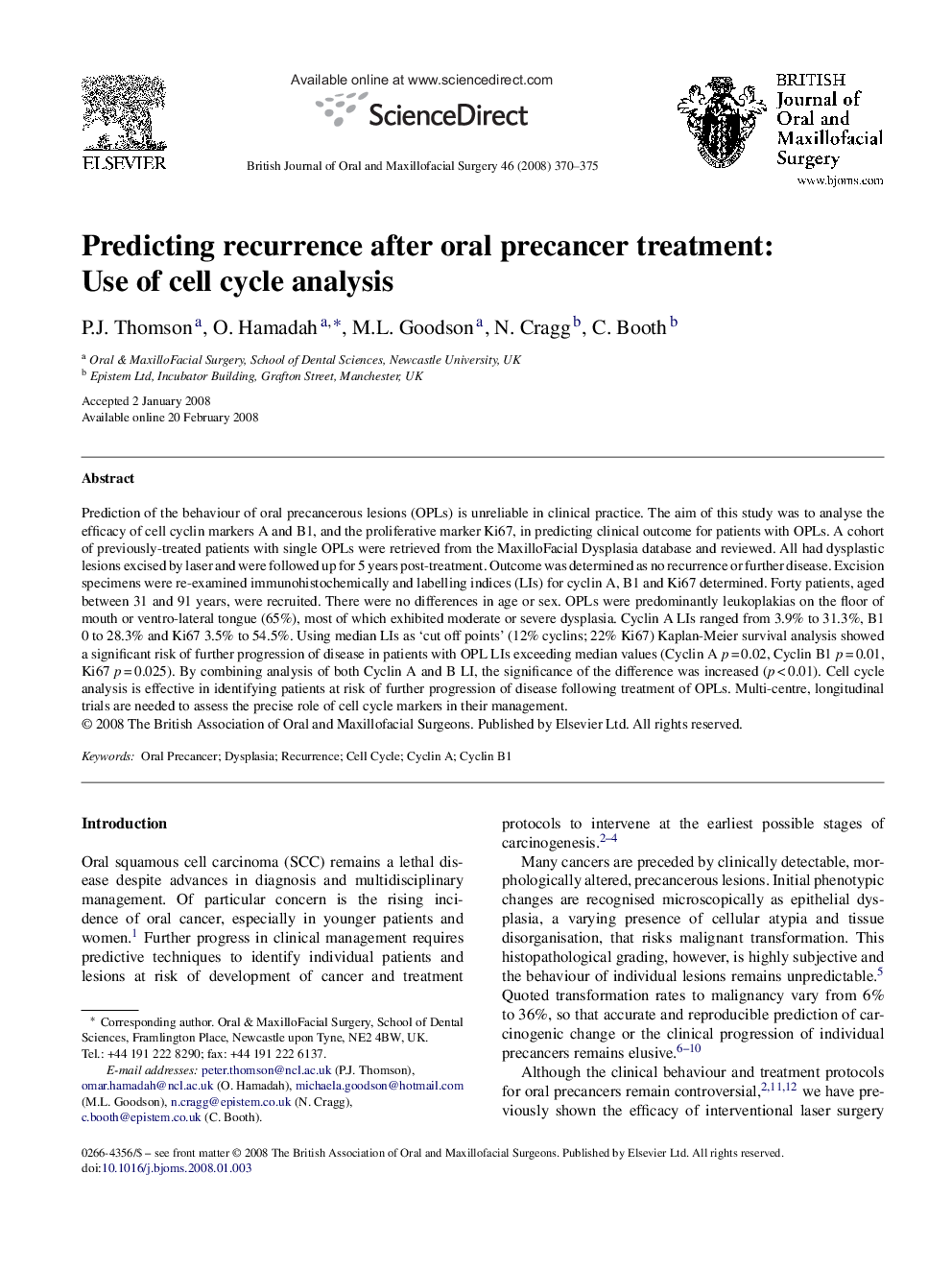| Article ID | Journal | Published Year | Pages | File Type |
|---|---|---|---|---|
| 3125599 | British Journal of Oral and Maxillofacial Surgery | 2008 | 6 Pages |
Abstract
Prediction of the behaviour of oral precancerous lesions (OPLs) is unreliable in clinical practice. The aim of this study was to analyse the efficacy of cell cyclin markers A and B1, and the proliferative marker Ki67, in predicting clinical outcome for patients with OPLs. A cohort of previously-treated patients with single OPLs were retrieved from the MaxilloFacial Dysplasia database and reviewed. All had dysplastic lesions excised by laser and were followed up for 5 years post-treatment. Outcome was determined as no recurrence or further disease. Excision specimens were re-examined immunohistochemically and labelling indices (LIs) for cyclin A, B1 and Ki67 determined. Forty patients, aged between 31 and 91 years, were recruited. There were no differences in age or sex. OPLs were predominantly leukoplakias on the floor of mouth or ventro-lateral tongue (65%), most of which exhibited moderate or severe dysplasia. Cyclin A LIs ranged from 3.9% to 31.3%, B1 0 to 28.3% and Ki67 3.5% to 54.5%. Using median LIs as 'cut off points' (12% cyclins; 22% Ki67) Kaplan-Meier survival analysis showed a significant risk of further progression of disease in patients with OPL LIs exceeding median values (Cyclin A p = 0.02, Cyclin B1 p = 0.01, Ki67 p = 0.025). By combining analysis of both Cyclin A and B LI, the significance of the difference was increased (p < 0.01). Cell cycle analysis is effective in identifying patients at risk of further progression of disease following treatment of OPLs. Multi-centre, longitudinal trials are needed to assess the precise role of cell cycle markers in their management.
Related Topics
Health Sciences
Medicine and Dentistry
Dentistry, Oral Surgery and Medicine
Authors
P.J. Thomson, O. Hamadah, M.L. Goodson, N. Cragg, C. Booth,
